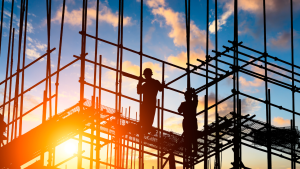How to Ensure Quality when Building Commercial Projects
Building a commercial building is a significant undertaking that requires careful planning, meticulous execution, and a focus on ensuring quality. With multiple stakeholders involved and a substantial financial investment at stake, it is essential to prioritize quality throughout the construction process. Here are some key steps to ensure quality when building a commercial building:
1. Detailed Planning and Design: A solid foundation for quality starts with comprehensive planning and design. Engage with experienced architects, engineers, and consultants who can develop detailed plans and specifications that meet your requirements. Thoroughly review these plans and ensure they adhere to local building codes and regulations. Additionally, consider incorporating sustainable practices and energy-efficient designs to enhance the building’s long-term quality.
2. Select Reliable Contractors and Suppliers: Choosing the right contractors and suppliers is crucial to ensure quality construction. Research and vet potential partners, checking their credentials, experience, and reputation. Request references from previous clients and visit their completed projects to evaluate the quality of their work. Once selected, establish clear communication channels and regularly monitor their progress to ensure they adhere to quality standards.
3. Strict Quality Control and Inspection: Implement a robust quality control system throughout all stages of construction. Regularly inspect the workmanship and materials used to identify and rectify any potential defects or deviations from the plans. Enforce strict adherence to approved construction methodologies, codes, and standards. Engage independent third-party inspectors to conduct inspections at various milestones to ensure compliance with quality requirements.
4. Efficient Project Management: Effective project management plays a vital role in maintaining quality standards. Appoint an experienced project manager to oversee the construction process, coordinating between contractors, suppliers, and other stakeholders. The project manager should actively monitor progress, address any issues promptly, and ensure that the project stays on schedule and within budget. Regular project meetings and reporting mechanisms can help identify and address any potential quality concerns.
5. Adequate Material Selection: Choose high-quality materials that meet the required specifications and standards. Collaborate with suppliers to verify the authenticity and quality of the materials being used. Establish standard operating procedures for acceptance and storage of materials, ensuring they are properly handled, protected, and used in the correct sequence during construction.
6. Embrace Technology and Innovation: Harnessing technology and innovation can significantly improve the quality of construction. Incorporate Building Information Modeling (BIM) software to visualize the building’s design, detect clashes, and optimize construction sequences. Utilize construction management software to track project progress, schedule tasks, and identify potential issues. Implement quality management systems to streamline processes, capture non-conformities, and facilitate corrective actions.
7. Regular Communication and Collaboration: Open communication and collaboration among all parties involved in the construction process are essential for ensuring quality. Encourage prompt reporting of any issues or concerns, allowing for immediate action to rectify them. Foster a cooperative working environment that promotes teamwork and problem-solving, enhancing overall quality and efficiency.
8. Post-Construction Follow-up: Once the building is completed, undertake a thorough post-construction inspection to identify any defects or issues that need to be addressed. Address these concerns promptly under warranty agreements. Conduct regular maintenance and inspections to ensure the building continues to meet quality standards over time.
In conclusion, ensuring quality when building a commercial building necessitates a comprehensive approach that encompasses planning, design, construction, and post-construction stages. By focusing on detailed planning, selecting reliable partners, implementing rigorous quality control, embracing technology, and fostering collaboration, developers can ensure that their commercial building meets the highest quality standards, resulting in a successful and enduring structure.



Recent Comments